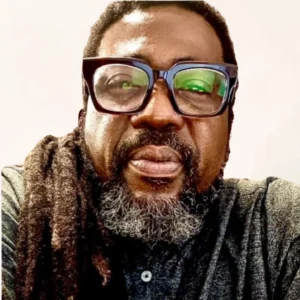Orlando Needs Paolo Banchero: The Superstar Magic Fans Can Trust
After years of heartbreak, Orlando Magic fans finally believe again. Here’s why Paolo Banchero is the superstar who can change

When Orlando turned 150 this summer, the city threw its parties, raised its banners, and went back to business. The real story of a place, however, isn’t written in fireworks. It’s written in ink. For every boom and bust, every protest and every parade, someone’s been there with a notebook and a deadline, trying to make sense of it all.
For a century and a half, someone’s always been on the beat, telling the stories that showed a budding city to itself and demanding that it become more. They informed, pushed, and elevated Orlando’s voice long before hashtags or reels existed.
Before the interstates, the theme parks, or most of what we now call ‘Orlando,’ there was the Orlando Sentinel. It began in 1876 as The Orange County Reporter, serving farmers and shopkeepers in a town of a few hundred souls, a far cry from the city we know today. By the early 1900s it had absorbed its competitors, renamed itself The Morning Reporter, and later, The Sentinel Star.
Through world wars, the Civil Rights era, and the arrival of Disney, the Sentinel was the city’s mirror, proud when it wanted to be, quiet when it shouldn’t have been. It told us when the groves froze, when towers rose, and when council fights got personal, shaping debate long before talk radio or social feeds.
The paper became Orlando’s institutional memory, the place you went to argue, to mourn, or to remember. Even now, after mergers, layoffs, and digital pivots, its archives remain the city’s paper trail, the first rough draft of the place we live in.
In 1975, amid national recession and local change, Dr. Calvin Collins and a small circle of community leaders decided Orlando needed a newspaper that spoke directly to its Black citizens. The Orlando Times was born in a modest office off Orange Blossom Trail with one guiding purpose: to print positive information about African Americans and other minorities.
For nearly five decades, it has covered graduations, funerals, church anniversaries, and quiet victories the mainstream ignored. It chronicled the rise of local Black entrepreneurship, the voices of pastors and educators, and the ongoing struggle for fair housing and representation.
While other papers chased headlines, The Times built heritage. Nearly fifty years on, it remains one of Florida’s longest-running Black newspapers — proof that storytelling can preserve a people as much as it informs them.
By the early 1990s, a new kind of paper hit the streets. With its bold covers, thick ink, famed horoscopes, and free racks by every coffee shop and record store in town, Orlando Weekly wasn’t interested in press conferences or ribbon-cuttings. It wanted noise, satire, and accountability.
The Weekly gave Orlando its attitude. By calling out developers, spotlighting underground bands, and turning fringe art into front-page culture, it was the city’s caffeine jolt — messy, loud, and necessary.
Its voice was unmistakably progressive, sometimes polarizing, but always engaged. Through ownership changes and the digital shift, its DNA stayed the same: civic mischief with moral purpose. It proved journalism didn’t have to be polite to be powerful, and that a little ink and irreverence could still shake the room.
By the early 2000s, another Orlando publication was making national noise, one printed on glossy pages and powered by sub-bass and 808s. Founded by Julia Beverly, Ozone Magazine gave a voice to the South’s independent hip-hop scene long before social media leveled the field. What started as a local zine evolved into a Southern institution, covering artists from Florida to Houston and Atlanta while reminding the industry that Orlando had a voice of its own.
It proved Orlando’s story didn’t just play out in boardrooms or council chambers. It was written in studios, shouted from stages, and passed hand-to-hand through the culture.
Then came the 2010s, when print shrank and the web began to roar. When print’s influence waned, its DNA carried forward. The watchdog grit of the dailies and the edge of the alt-press re-emerged in a new generation of digital storytellers.
Blogs. Newsletters. Instagram pages. Everyone became a newsroom.
Bungalower charted neighborhood growth and small-business culture. Shine Magazine mixed style, art, and entrepreneurship. Independent creators turned social feeds into hyperlocal reporting. Podcasts and community pages filled the gaps left by shrinking city beats.
Some mourned the loss of the old dailies. Others saw a rebirth. Either way, Orlando’s conversation didn’t fade, it multiplied. The presses slowed, but the pulse didn’t.
A city is more than a skyline or its slogans. It’s a chorus of people trying to make sense of where they live. Sometimes it’s in harmony, sometimes it’s at odds, but it’s always singing something true.
For 150 years, Orlando’s storytellers have challenged, critiqued, inspired, and carried this city forward. From The Sentinel’s presses to The Times’ community pages, The Weekly’s rebel ink, and Ozone’s national reach and influence on Hip-Hop culture, theirs is a long and proud tradition, one that Pulp City Magazine is proud to carry on.
Because the story of Orlando isn’t finished. It keeps finding new ways to be told. Long live the city.

Pulp City Mag Founder | Culture | Music
After years of heartbreak, Orlando Magic fans finally believe again. Here’s why Paolo Banchero is the superstar who can change
The Florida Gators enter the 2025 season with high expectations, a coach under pressure, and DJ Lagway leading the charge
Florida State heads into the 2025 season with Thomas Castellanos at quarterback, a roster full of transfers, and big questions
UCF football enters 2025 with Scott Frost’s return, a rebuilt roster, and big questions in the Big 12. Can the
As Orlando celebrates 150 years, one man’s influence looms large. Martin Andersen turned the Orlando Sentinel into a lever for